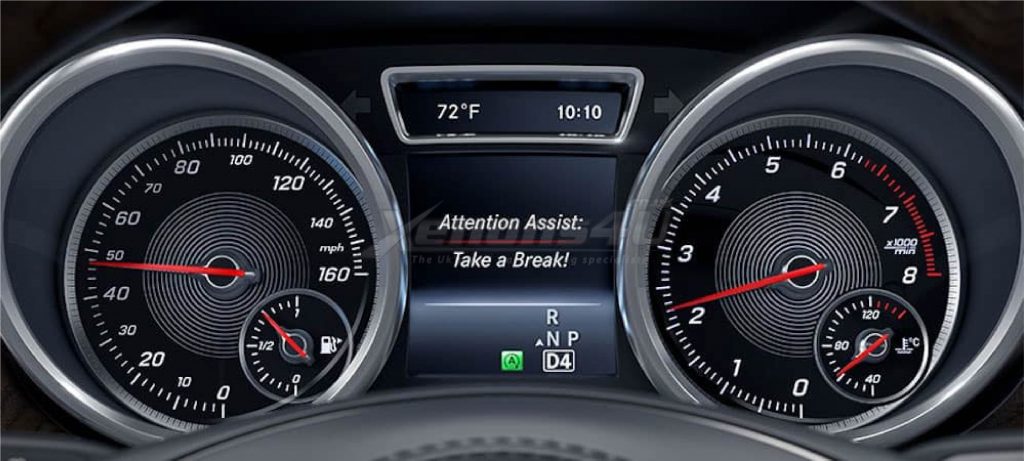Launched in 2008 and now fitted as standard on most models, the Mercedes Attention Assist function is designed to detect signs of driver fatigue and intervene before they become dangerous.
Why does my Mercedes say "Attention Assist: Take a Break"?
The first of its kind in the industry, Attention Assist monitors the driver constantly in order to build a profile of their normal behaviour behind the wheel. This allows it to flag up any deviations from this behaviour which could be signs of increased drowsiness.
The system become active as soon as the vehicle reaches a speed of 80km/h. It analyses over 70 aspects of driver behaviour, including acceleration, braking, use of the indicators and pedals and, most importantly, steering. This last measure has been shown to be the most reliable test for driver drowsiness as tired drivers will often struggle to steer a steady course and will compensate with a series of minute steering corrections. The system also takes into account external factors such as adverse weather conditions and uneven road surfaces to determine whether changes in driver behaviour are due to drowsiness or a change in the environment.
When Attention Assist finds a cause for concern it will instruct the driver to take a break with both audio and visual alerts; a warning sound is played and a picture of a coffee cup flashes on the dashboard. Some models will also guide the driver to the nearest service station using the on-board navigation system.
In conclusion if you are seeing this warning message we strongly suggest to take a break for at least 5 minutes as it will do big impact on your drowness and over all feeling.
Does it work?
Initial reactions to the system were hugely positive, with reviewers praising its potential to save lives. Writing for Cars.com in 2015, Mike Hanley was sure that “Our roads will be safer for it", although he also pointed out that the system’s success is largely dependent on drivers heeding its warnings. This is true of all safety features though. There will always be drivers who think that they know better than their cars but, hopefully, over time, Attention Assist will become an accepted part of our driving experience in the same way as parking sensors or satellite navigation. Drowsiness is a killer and anything that helps to stop it should be encouraged.
Mercedes-Benz attention assist is factory fitted on many different car models such as A-class CLA W177 E-class W212 S212 A207 C207 W213 S213 A238 C38 C-class W204 S204 W205 S205 C205 A207 S-class W220 W221 W222 ML GLE GL G-class CLS W218 W219 and many other.
There are few different types of warning messages, which could pop out during your trip.
- Attention assist: Take a a break!
- Attention assist: Drowsiness detected
- Attention assist: Pause!
Of course, if we really want to make our roads safer, such systems need to be included on all cars, not just Mercedes vehicles. Fortunately, it seems that other companies are starting to follow suit. In 2012 Ford launched its Driver Alert system which uses a small camera positioned behind the rearview mirror to monitor the car’s position on the road and detect signs of drifting caused by tiredness. Perhaps, in time, such systems can eliminate fatigue-related accidents altogether.




